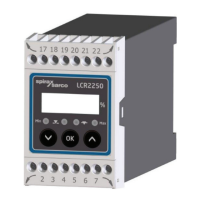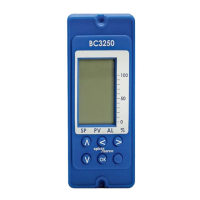27
6.4 Commissioning - Full
Enter 'commissioning' as stated in Section 2, and follow the main menu structure to make
the changes required.
Warning:
The minimum conductivity when used with the LP20 / PA20 or PA420 is 5 µS / cm or 5 ppm.
6.4.1 Main menu structure
Input Select – Selects input for the type of level transducer i.e.:
1 - 6 V (PA20) or 4 - 20 mA (PA420).
Input Filter – 3 settings of water level signal damping to suit turbulent conditions.
Note: excessive delays can cause system instability. 2 seconds, 8 seconds or
16 seconds.
Input Alarm – to warn that the input is out-of-range i.e.:
1 - 6 V (PA20) or 4 - 20 mA (PA420).
Off or On.
Alarm 1 - Alarm Select – sets the alarm to be a low alarm or a high alarm. hi or Lo.
Alarm 1 - Alarm level Percentage – Sets the alarm level as a percentage of
gauge glass. The hysteresis is fixed at 5%.
ALarm Filter – Select 'on' to enable an 8 second delay option to avoid over-
frequent switching in turbulent conditions.
ALarm Latch –
Latch Off – alarm will operate only until the level recovers.
Latch On – alarm will continue to operate until reset by entering the alarm reset,
passcode or the commissioning menu passcode.
Off or On.
Retransmit – selects 4 - 20 mA or 0 - 20 mA retransmit output signal.
4.20 or 0.20.
Alarm 2 - Alarm Select – sets the alarm to be a low alarm or a high alarm. hi or Lo.
Alarm 2 - Alarm level Percentage – Sets the alarm level as a percentage of
gauge glass. The hysteresis is fixed at 5%.
